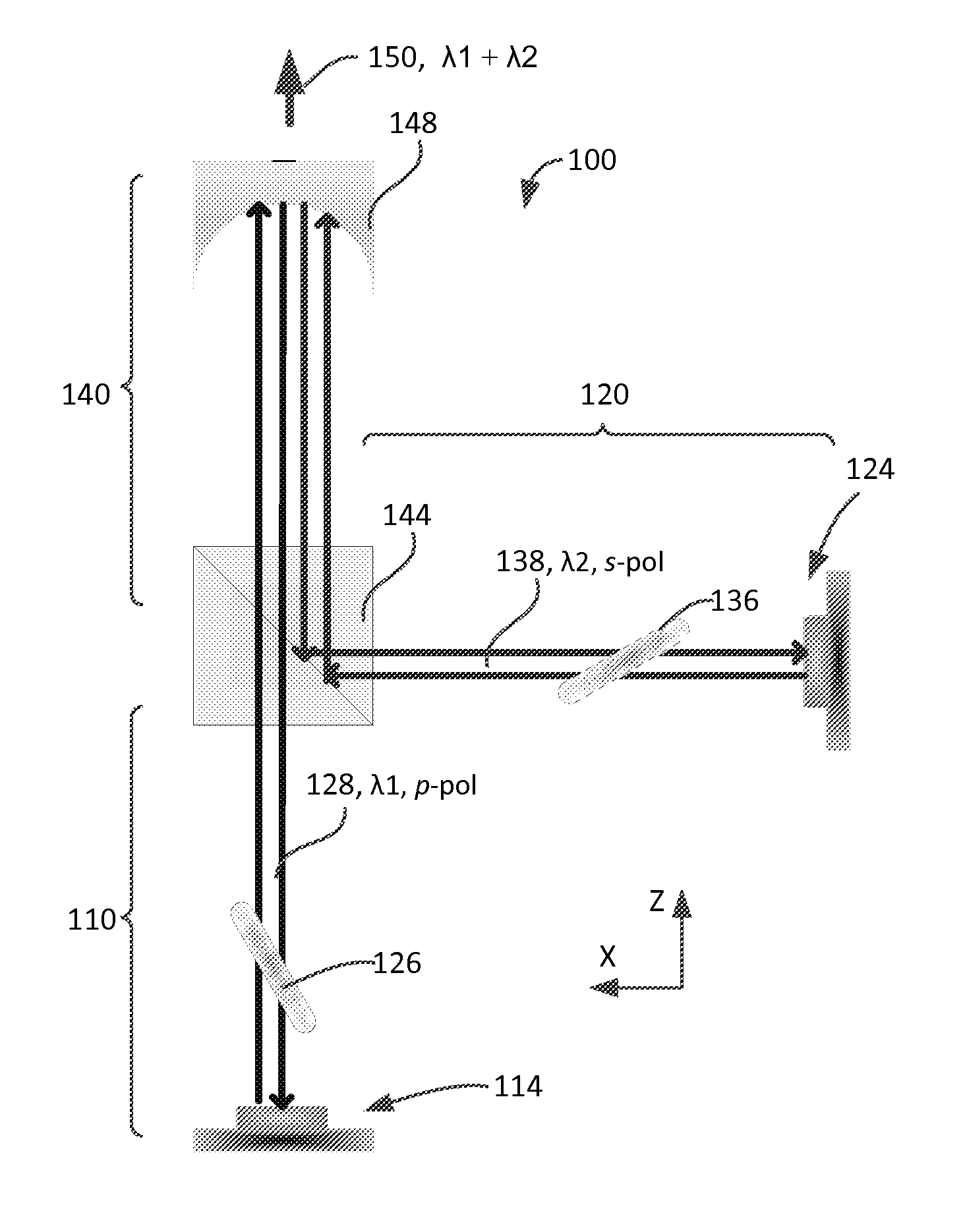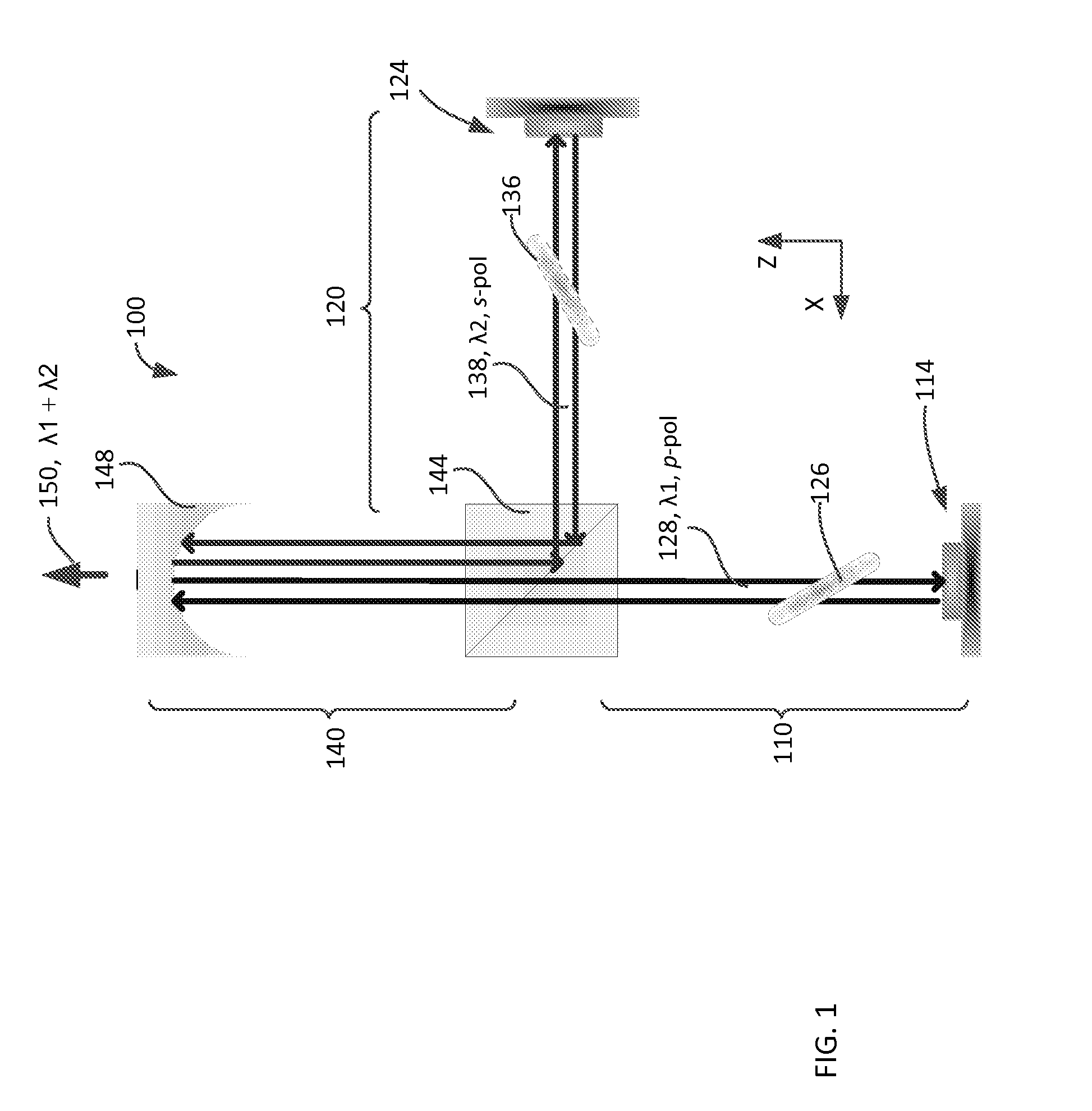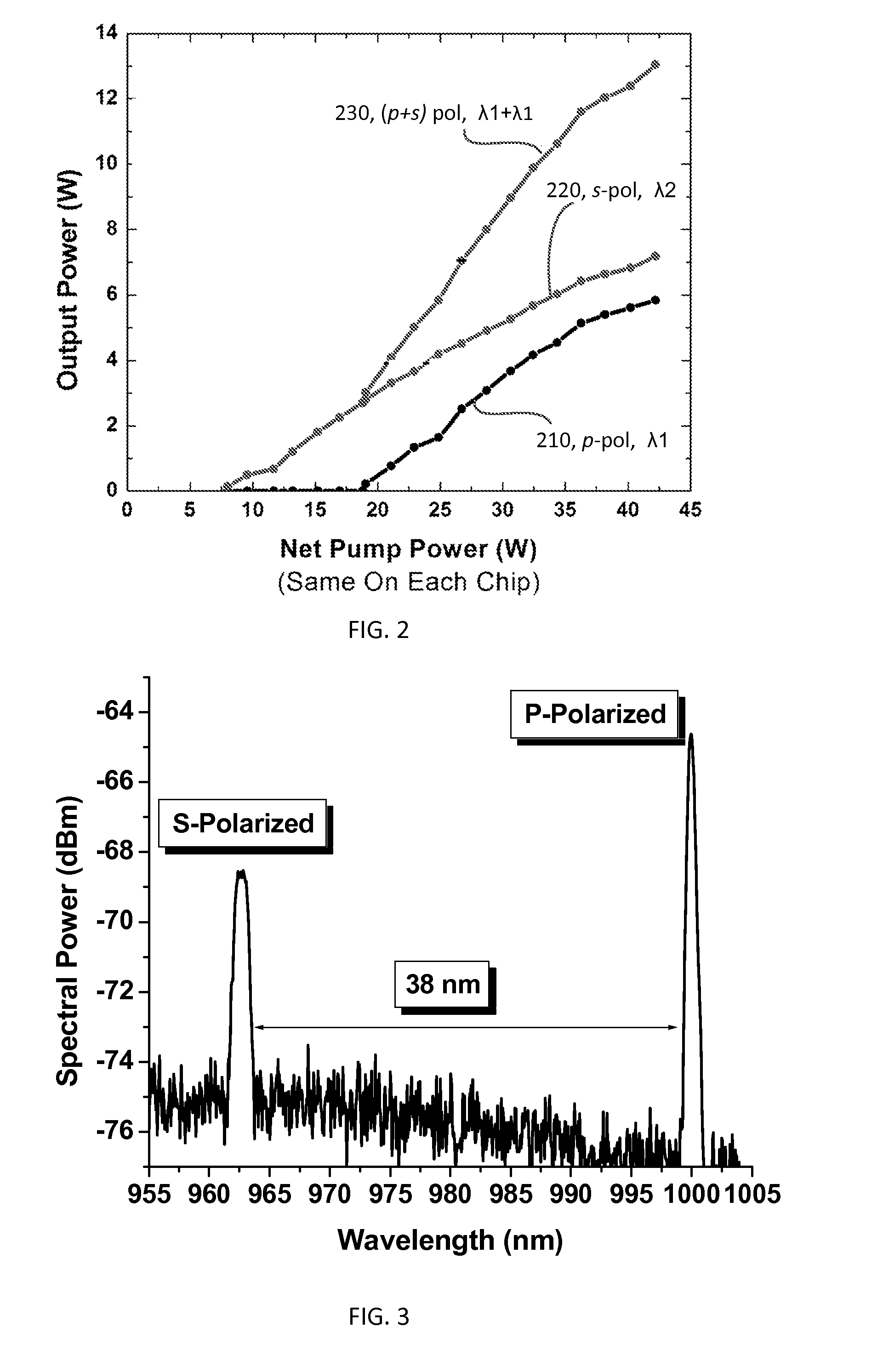Multi-chip vecsel-based laser tunable independently at multiple wavelengths
- Summary
- Abstract
- Description
- Claims
- Application Information
AI Technical Summary
Benefits of technology
Problems solved by technology
Method used
Image
Examples
embodiment 100
[0036]FIG. 2 illustrates the power output of the embodiment 100 after the described-above modification has been implemented, with the plots 210, 210 corresponding to one portion of the output (at λ1 and λ2, respectively) generated while the cavity arm corresponding to another portion of the output was blocked. Plot 230 represents the combined output. The independently operated VECSEL chips 114, 124 in the cavity 100 generated CW p-polarized and s-polarized light outputs at about 6 W and about 7 W, respectively. When both arms 110, 120 of the open cavity network 110 were operated simultaneously, the resulting aggregate output power amounted to about 13 W. FIG. 3 is a plot showing the two-peak spectrum of the combined output 150 (with both arms 110, 120 operational) where the laser system generated p-polarized light at about 1000 nm and s-polarized light at about 962 nm. Each lasing mode had a lasing linewidth of about 3 nm.
[0037]The empirical results of independent and separate spect...
embodiment 500
[0039]A related embodiment 500 of the invention is schematically shown in FIG. 5 and shows a two chip co-linear T-cavity VECSEL device that folds a portion of intracavity light 138 (s-polarized) about a polarizing beamsplitter 144 while allowing the second portion of light 128 (p-polarized) to pass through the splitter 144 unabated. This implementation lends itself to implementing a tunable intracavity type II sum frequency generation (SFG) to achieve high-power, high stability light output 150 in the blue-green spectral bands. The T-cavity includes three spatially distinct cavity regions or portions or sections 110, 120, 510 each of which supports VECSEL's lasing in a distinct fashion. As was discussed in reference to FIG. 1, the spatially distinct cavity portions 110, 120 are structured to support independent lasing at wavelengths λ1, λ2 and at orthogonal polarizations, while the collinear cavity section 510 is shared by (is common to) intracavity light portions 128, 138. As a res...
PUM
 Login to View More
Login to View More Abstract
Description
Claims
Application Information
 Login to View More
Login to View More - R&D Engineer
- R&D Manager
- IP Professional
- Industry Leading Data Capabilities
- Powerful AI technology
- Patent DNA Extraction
Browse by: Latest US Patents, China's latest patents, Technical Efficacy Thesaurus, Application Domain, Technology Topic, Popular Technical Reports.
© 2024 PatSnap. All rights reserved.Legal|Privacy policy|Modern Slavery Act Transparency Statement|Sitemap|About US| Contact US: help@patsnap.com










